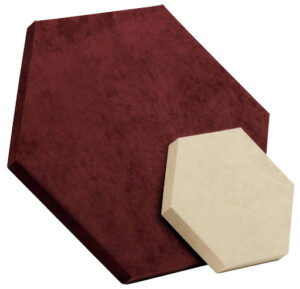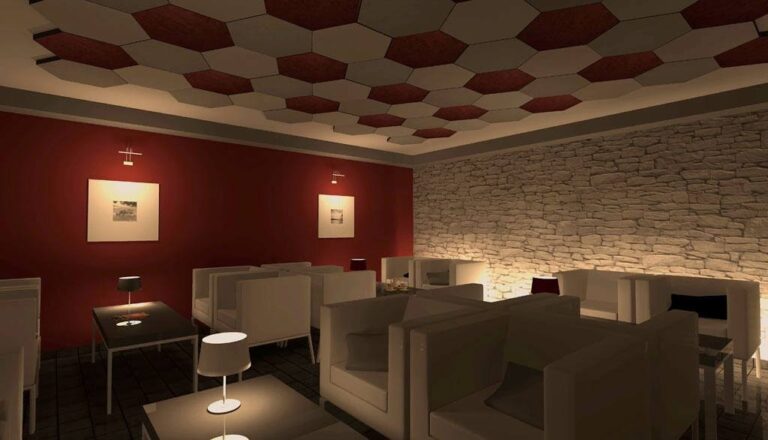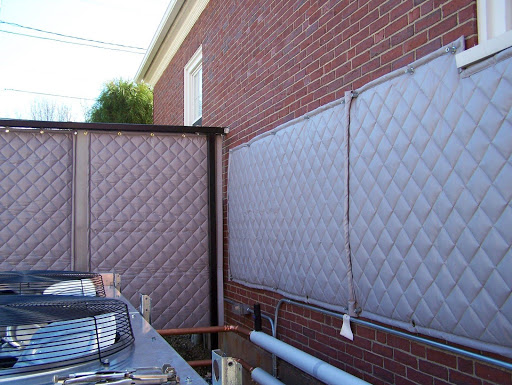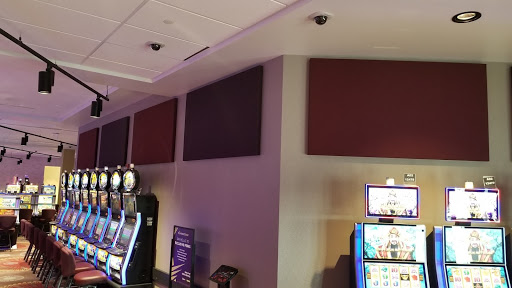Table of Contents
- What exactly is soundproofing material?
- Sound Absorbing Vs. Soundproofing Materials
- Four Soundproofing Principles
- Best Soundproofing Materials and Products
Is the noise from your neighbours keeping you awake at night, or do you work from home and find it difficult to focus due to the noises outside your door? Do you value peace and wish your house was more peaceful, or do you have a loud activity or profession and do not want to bother others?
If you answered "Yes!" at least once while reading these questions, you should know that practical solutions to your issues exist. So rather than becoming irritated, have a look at our list of the finest soundproofing materials to see whether they may help you block noise from entering or exiting a room.
What exactly is soundproofing material?
Before getting further into the subject, you should be familiar with the fundamentals of soundproofing materials. For instance, what they are, how they function, and how successful they may be. To comprehend how soundproofing materials function, we must first comprehend sound.
Consider a sound to be a kind of energy, the energy produced as a consequence of objects vibrating. That energy needs to go someplace; it moves away from its source, vibrating things and the air around us in the process. The energy then travels to our ears, where it vibrates, and we can detect the sound in our brain.
As a result, a sound begins at its source, travels via various mediums, and eventually reaches our ears and activates our brains. Thus, if we wish to halt the sound anywhere along its path, we must break the chain of events.
Soundproofing is any method of decreasing sound pressure with a particular sound source and its receiver; soundproofing would be impossible without soundproofing materials.
Noise reduction properties are claimed for several building materials. However, you must choose the appropriate one based on the various transmission modes and noise frequencies. In addition, the location of the soundproofing has a significant influence on the material selection.
Sound Absorbing Vs. Soundproofing Materials
A frequent misunderstanding is that sound absorption and soundproofing are the same thing. Absorption is, in fact, one of the components of soundproofing. The primary distinction between a sound-absorbing substance and a soundproofing material is that the former enhances the space’s acoustics. At the same time, the latter stops the sound from entering or leaving the room.
Sound absorbing materials decrease reverberations and echo previously existing noises in the space; they cannot prevent sounds from entering or leaving the area. As a result, good sound-absorbing materials may be ineffective for soundproofing.
However, if you want full sound isolation, you should mix these two kinds of materials; they complement each other well. However, if you do not mind the repercussions and your main issue is noise, stick to soundproofing.
Four Soundproofing Principles
Soundproofing may seem to be a difficult subject. But, unfortunately, there is a lot of misinformation out there that confuses us and individuals who pretend to be experts but aren't.
Based on the mechanics of sound propagation, there are just four soundproofing concepts.
These concepts, when combined with soundproofing methods and materials, are more than sufficient for effective soundproofing.
Mass
All hefty and thick solid items will block sound. People bothered by airborne noises, such as voices, find this method to be the most effective. If you want to experiment with this concept, you may simply utilize the furniture to add bulk to the walls. Mass-Loaded Vinyl may also be installed under or over drywall. When it comes to impact noise, though, the mass concept is not particularly helpful.
Damping
Damping is accomplished via the use of damping chemicals. These chemicals possess a unique characteristic that enables them to transform sound energy into heat, causing the sound to cease abruptly. Green Glue is an excellent example of a damping substance, but silicone caulk has comparable characteristics.
The damping compound must be placed between two rigid panels, such as drywall or plywood, and then screwed together to function. As a result, when sound enters the system, shearing forces between the stiff panels produce friction in the dampening layer, turning the sound energy into heat.
Damping is the most efficient way to cope with low-frequency noise.
Decoupling
When sound travels through a building's structure, it is preferable to utilize decoupling. Interrupting sound vibrations becomes considerably simpler when gaps are created in specific sections of the structure.
It is preferable to use decoupling during construction. Although it is possible to do so later, it would be considerably more difficult since existing walls, floors, or ceilings would have to be removed.
If you are searching for a soundproofing material that is best for decoupling your drywall from the structure of the building, robust channels are a good option. They are extremely good at dealing with low frequencies and even noise since noises end up vibrating ineffectively against the channels rather than penetrating through walls.
Decoupling, despite its effectiveness, requires forethought and expert installation.
Absorption
Finally, as already stated, there is absorption. Although it contributes to soundproofing, its impact is not nearly as strong as the preceding three concepts. However, if you want to get the greatest outcomes, you should think about it as well.
You have probably heard about the most absorbent soundproofing materials. Of course, I am referring to acoustic foam. It comes in various forms, sizes, and colours, but it is important to remember that it is more helpful for enhancing audio quality within a space than for suppressing sound. Soft furniture, in addition to acoustic foam, may be helpful for sound absorption.
These four concepts operate separately, yet they also complement one another. So, if you have tried one technique and are still unhappy with the noise reduction, consider trying another. The combination of these factors will provide the greatest outcomes.
Best Soundproofing Materials and Products
- Mass Loaded Vinyl
- Acoustic Mineral Wool Insulation
- Green Glue Soundproofing Compound
- Resilient Sound Channels
- Soundproof Drywall
- Acoustic Caulk, Sealant
- Soundproof Foam Panels
- Soundproof Curtains
- Soundproof Room Divider Curtains
- Soundproofing Window Film
- Weatherstripping
- Door Seal and Sweeps
- Soundproof Wallpaper and Paint
Final Thoughts on Soundproofing Materials
I hope you liked reading my list of the majority of the soundproofing materials you will ever need. You can fully soundproof your house from the beginning to the conclusion of the list. Alternatively, you may limit your search to those that will address the particular issues you are attempting to solve.
Finally, my aim here was to start you thinking about whether you are content with the present amount of noise in your house, workplace, or wherever. Why put up with noise when you can prevent it by using the finest soundproofing materials and products?



